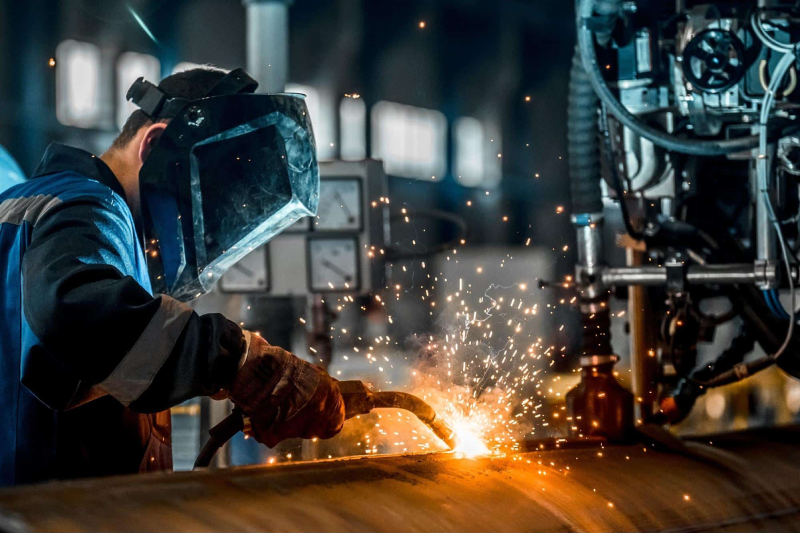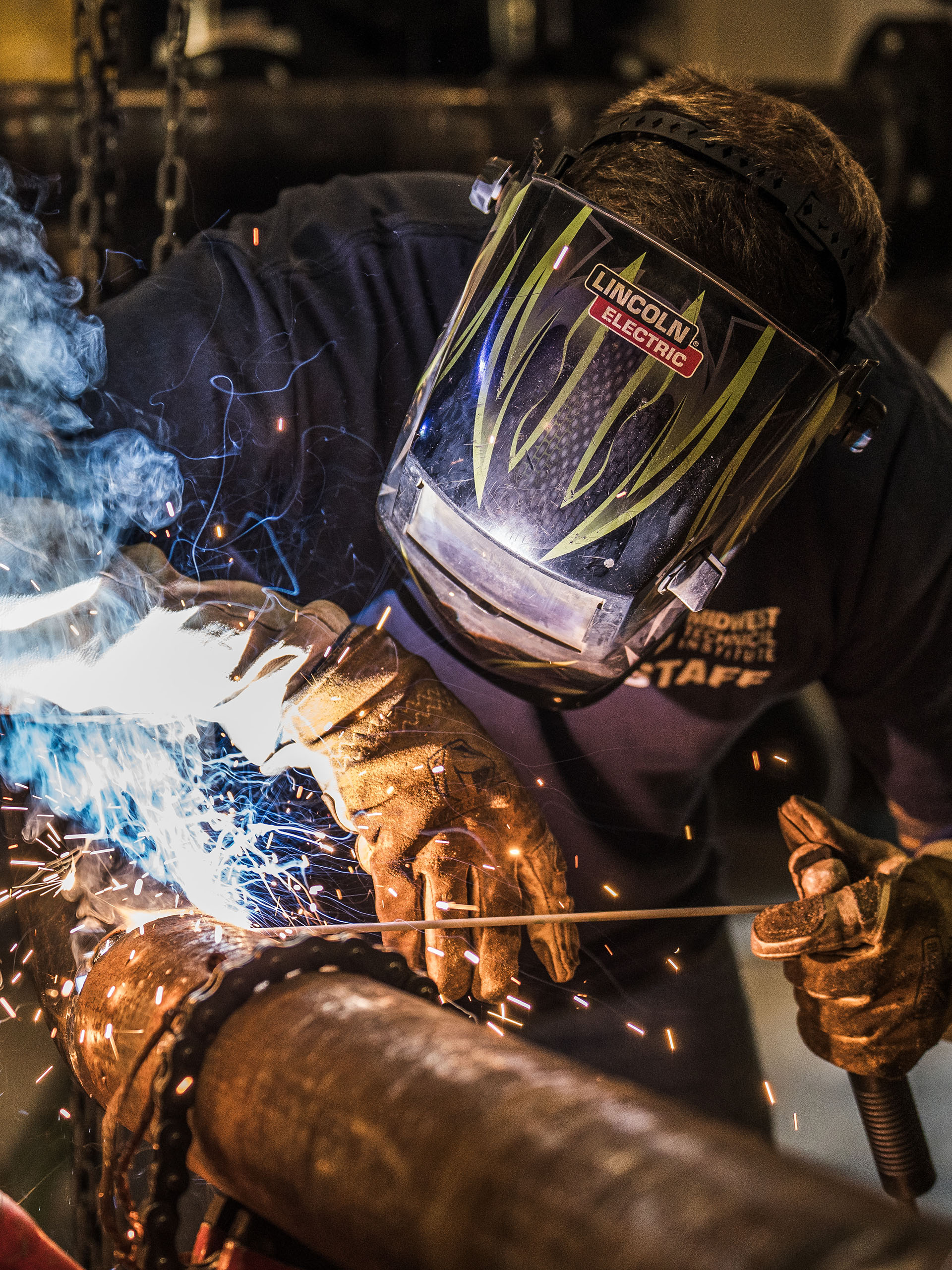Everything about Welding: Secret Insights Into Techniques and Ideal Practices for Success
Welding incorporates a selection of techniques, each fit for specific products and applications. Comprehending these approaches, such as GMAW, SMAW, and TIG, is vital for accomplishing optimal results. Moreover, the ideal equipment and safety and security techniques can not be forgotten. As prep work and troubleshooting play critical roles in the welding process, understanding these elements can considerably boost the top quality of the last product. What are the essential factors that ensure an effective weld?
Comprehending Different Welding Techniques
Welding methods incorporate a variety of techniques, each fit to certain applications and products. Among the most usual strategies are Gas Steel Arc Welding (GMAW), Secured Metal Arc Welding (SMAW), and Tungsten Inert Gas Welding (TIG) GMAW, also referred to as MIG welding, is popular for its rate and adaptability, making it excellent for slim materials. SMAW, or stick welding, is favored for its simplicity and performance in outside atmospheres, particularly with thicker metals. TIG welding offers accuracy and control, making it appropriate for elaborate job and non-ferrous steels (Montana Mobile Welding and Repair Belgrade). Each strategy has its special benefits and considerations, permitting welders to choose the most effective approach based upon the job's demands, product type, and desired results. Recognizing these methods is crucial for effective welding
Important Welding Tools and Tools
While different welding strategies call for specific abilities, the best tools and tools are similarly necessary for achieving high quality outcomes. Important welding tools includes welding devices, which differ relying on the strategy-- such as MIG, TIG, or stick welding. Protective equipment, consisting of aprons, headgears, and handwear covers, warranties safety and security and convenience throughout the procedure. In enhancement, components and clamps help protect products in position, ensuring precision in welds. Consumables like welding poles, cable, and protecting gas are also critical parts that affect the top quality of the weld. In addition, devices such as grinders and cutters promote surface area prep work and post-weld completing, adding to a professional end result. Buying high-grade devices ultimately enhances the efficiency and effectiveness of welding projects.
Safety And Security Practices in Welding
Appropriate safety techniques are crucial in the welding market to safeguard employees from potential hazards. Welders have to use appropriate personal safety tools (PPE), consisting of safety helmets with appropriate shading, handwear covers, and flame-resistant clothing. Adequate air flow is vital to reduce exposure to dangerous fumes and gases produced during the welding procedure. Additionally, employees ought to be trained in the correct handling of welding tools to avoid accidents. Fire precaution, such as maintaining combustible products far from the welding location and having fire extinguishers easily available, are required. Routine inspections of equipment and work spaces can assist determine potential threats before they lead to mishaps. By adhering to these security practices, welders can develop a safer working atmosphere and reduce dangers connected with their profession.
Readying Products for Welding
Preparing materials for welding is an important action that significantly affects the high quality and integrity of the final item (Montana Mobile Welding and Repair Welding). Appropriate prep work entails cleaning up the surfaces to eliminate impurities such as rust, oil, and dust, which can endanger the weld. Techniques such as grinding, sanding, or utilizing solvents are frequently utilized to achieve a clean surface area. In addition, ensuring that the products fit together comfortably is crucial; gaps can lead to weak welds. It's also essential to take right into account the positioning and positioning of the parts, as this will certainly affect the simplicity of welding and the last end result. Choosing the suitable filler product and guaranteeing compatibility with the base steels is necessary for attaining strong, long lasting welds.
Tips for Getting High-Quality Welds
Achieving high-grade welds calls for attention to information and adherence to finest techniques throughout the welding process. Appropriate joint prep work is vital, guaranteeing surfaces are tidy and free from contaminants. Selecting the appropriate filler material and welding method based on the base steels is crucial for optimal bonding. Keeping consistent travel speed and angle while welding click here now can advertise and protect against flaws harmony. In addition, regulating warm input is essential; extreme warm can bring about warping and deteriorated joints. If necessary, frequently evaluating the welds throughout the procedure allows for prompt modifications. Ultimately, using appropriate post-weld therapies, such as cleaning and anxiety alleviation, can boost the resilience and integrity of the weld, eventually guaranteeing an effective end result.
Fixing Common Welding Issues
Welding typically provides challenges that can influence the high quality and honesty of the end product. Typical issues such as porosity, inconsistent weld grains, and getting too hot can arise, each calling for certain repairing strategies. Understanding these problems is necessary for welders to enhance their skills and accomplish perfect results.
Porosity Issues Described
Porosity can frequently be overlooked, it remains a crucial problem in welding that can compromise the honesty of a completed item. Porosity refers to the presence of small gas pockets within the weld grain, which can he said lead and compromise the joint to early failure. This trouble commonly develops from pollutants, wetness, or improper protecting gas insurance coverage during the welding procedure. To reduce porosity, welders should validate that the base products are clean and dry, use proper shielding gases, and maintain consistent welding specifications. On a regular basis examining the tools and environment can also assist determine potential issues before they show up in the weld. Dealing with porosity properly is crucial for achieving strong, resilient welds that fulfill quality requirements.

Inconsistent Weld Beans
Irregular weld grains can significantly influence the high quality and toughness of a finished item. Various variables add to this issue, consisting of incorrect traveling speed, wrong amperage settings, and irregular electrode angles. When the welder moves also swiftly, a grain may show up slim and lack infiltration, while relocating too gradually can cause excessive accumulation. Additionally, making use of the incorrect amperage can lead to either damaging or extreme spatter, both of which concession weld integrity. The welder's method, such as inconsistent torch motion, can also bring about uneven grain appearance. To mitigate these issues, welders must concentrate on preserving consistent, controlled movements and making sure proper devices settings to achieve harmony in their welds. Uniformity is key to attaining solid and dependable welds.
Overheating and Bending Issues
Too much warm during the welding procedure can result in significant getting too hot and deforming problems, influencing the architectural honesty of the work surface. These issues frequently materialize as distortion, which can jeopardize positioning and fit-up, making more setting up challenging. Elements contributing to overheating include the option of welding parameters, such as voltage and travel speed, along with the kind of material being welded. To mitigate these concerns, welders need to maintain consistent traveling rate and appropriate heat input while monitoring the work surface temperature. Furthermore, preheating or post-weld heat therapy can aid alleviate stresses brought on by rapid air conditioning - Montana Mobile Welding and Repair. Routine evaluation and adherence to ideal techniques are vital in stopping overheating and making certain the long life and reliability of bonded frameworks
Often Asked Questions
What Are the Career Opportunities in the Welding Sector?
The welding market offers varied occupation opportunities, consisting of settings as welders, teachers, designers, and examiners. Specialists can operate in manufacturing, construction, aerospace, and auto markets, profiting from strong demand and affordable wages in numerous duties.
How Can I Improve My Welding Speed Without Compromising Quality?
To enhance welding rate without sacrificing high quality, one cigweld mig welder must practice reliable strategies, keep equipment, optimize setups, and improve hand-eye control. Regular training and looking for responses can likewise significantly add to accomplishing much faster, high-quality welds.
What Qualifications Are Readily Available for Welders?
Many accreditations exist for welders, consisting of those from the American Welding Society (AWS), the National Center for Building Education and Research Study (NCCER), and numerous industry-specific companies. These qualifications enhance employability and show ability proficiency.
Exactly How Does Welding Affect the Features of Metals?
Welding affects the buildings of metals by modifying their microstructure, which can lead to changes in strength, ductility, and solidity. Warm input and air conditioning rates during the process significantly impact these product qualities.
Can I Weld Dissimilar Metals With Each Other?

Comments on “Best ways to deal with warping in Montana Mobile Welding and Repair Belgrade”